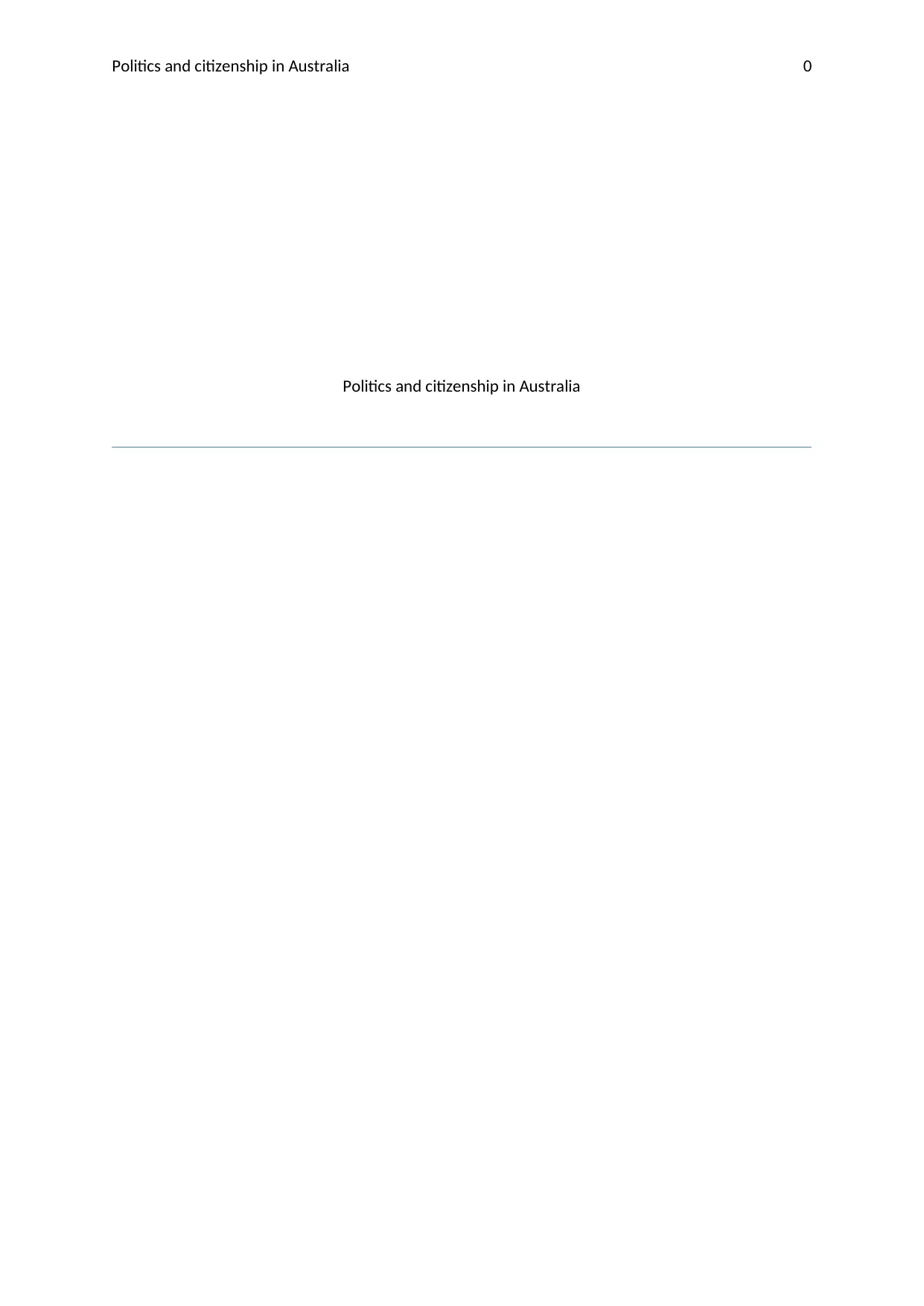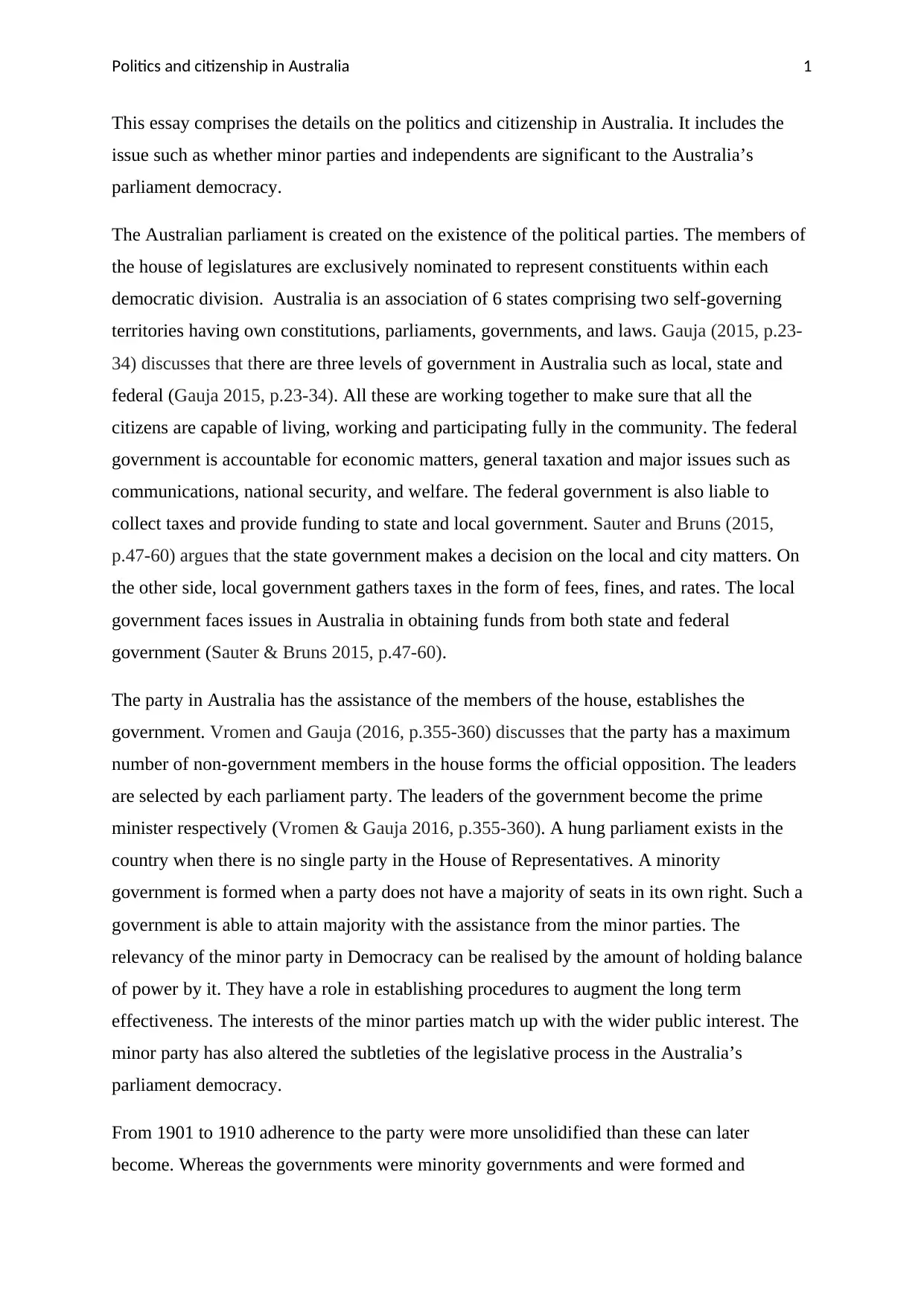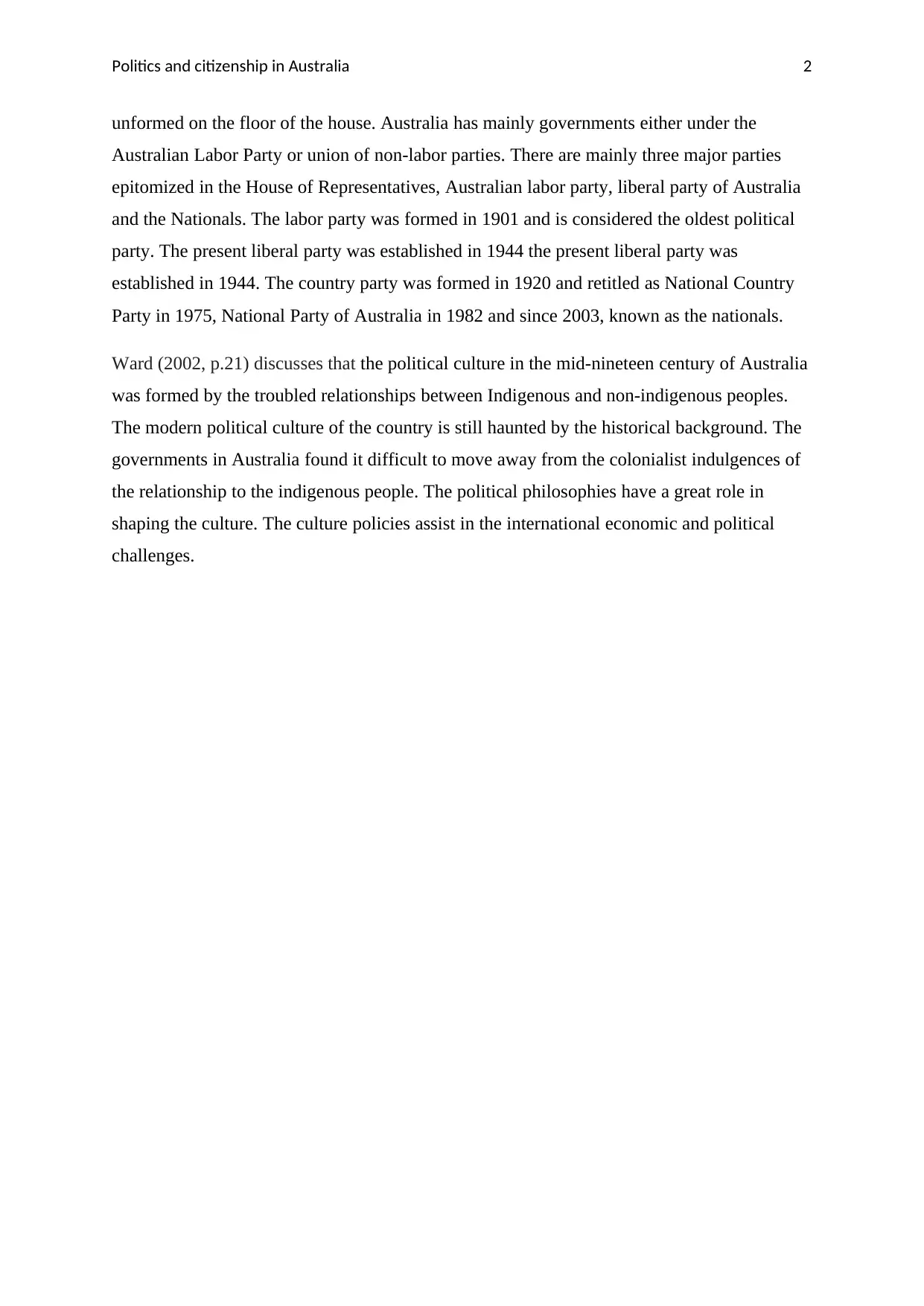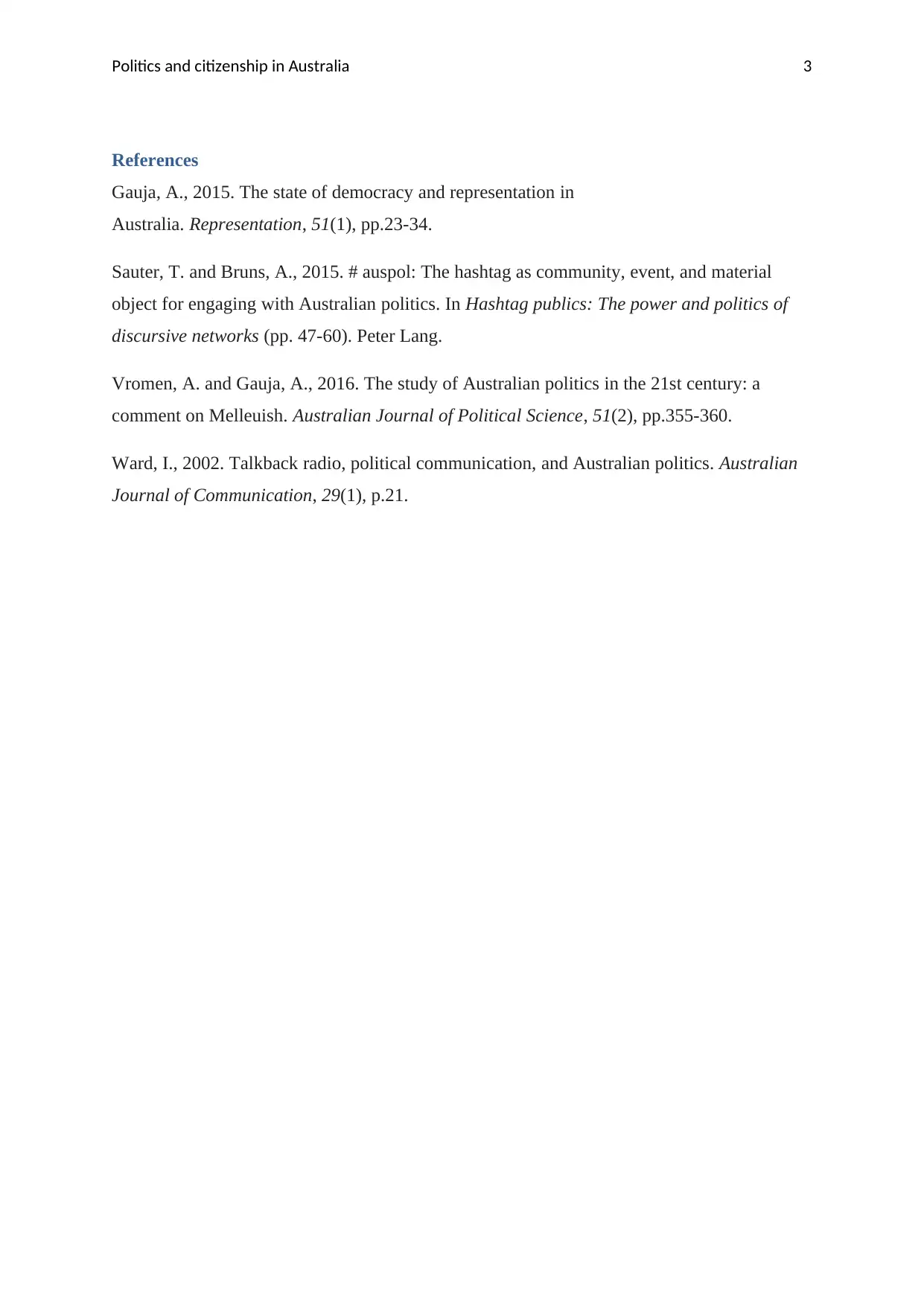Analyzing the Role of Minor Parties in Australia's Democracy
VerifiedAdded on 2023/04/19
|4
|848
|482
Essay
AI Summary
This essay delves into the intricacies of politics and citizenship in Australia, examining the role and significance of minor parties and independents within the country's parliamentary democracy. It highlights the three levels of government—local, state, and federal—and their respective responsibilities. The essay discusses how the party with the majority in the House forms the government, while the party with the most non-government members forms the opposition. It also explores the concept of a hung parliament and the formation of minority governments with the assistance of minor parties. The analysis extends to the historical context of political culture in Australia, shaped by the relationships between Indigenous and non-Indigenous peoples, and the impact of political philosophies on shaping the culture. The essay references scholarly articles to support its arguments, providing a comprehensive overview of the political landscape in Australia.
1 out of 4











![[object Object]](/_next/static/media/star-bottom.7253800d.svg)